
George Street runs from Tangier Street through to Michael Street passing the bottom of Wellington Row and the top of Church Street and crossing Queen Street and Scotch Street. In the past it also passed the ends of Senhouse Street and Charles Street.

On the artist Matthias Read's fine view of Whitehaven in the 1730's, George Street does not even exist - along its current line we see instead a rope walk. Although there are a few terraced houses in the area of Brackenthwaite, all of the hillside is open fields surrounded by hedges and even much of the town side is gardens. The ropewalk was run by Thomas Hartley thus an earlier name for the street from Tangier Street as far as the end of Brackenthwaite was Hartley Street or Walk Head and further on it became Brackenthwaite Lane.
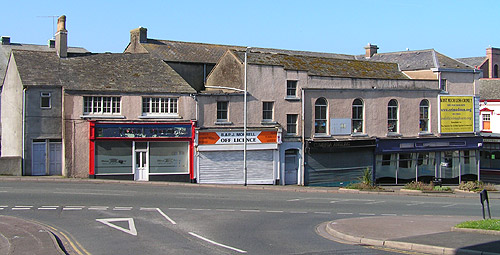
These properties sandwiched between George Street and Greggs Lane are known as Tangier Buildings. There was until recently an arcade that went through to the back that has now been incorporated into a shop. The strange layout indicates that the buildings may have been there since the 1730's when these tenancies were granted.
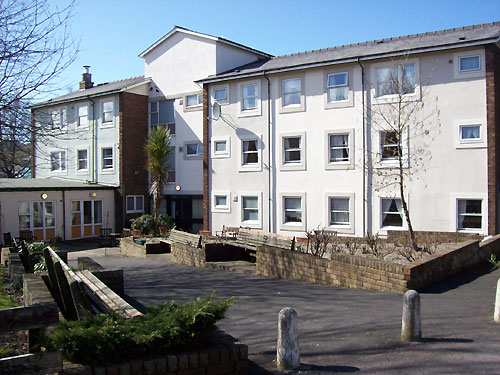
This is the Brackenthwaite care home seen from George Street where this entrance has a good outside area for residents to sit outside in the summer.
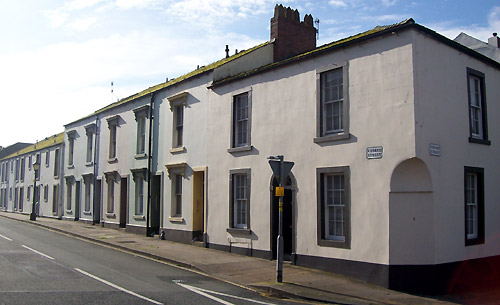
Despite being called George Street there are very few Georgian building left. Beyond the corner with Church Street we can see some that were partly saved and rebuilt keeping their original windows with decorative brackets and mouldings.
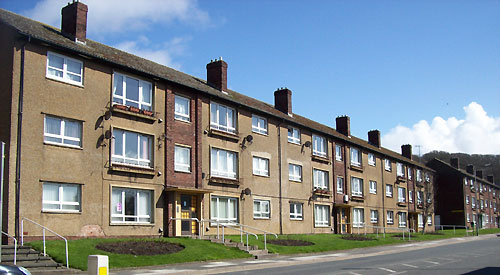
On the upper side of Duke Street we have the modern flats built after slum clearances removed the old terrace houses in the 1960's. Though functional these are a little bit too regimented to be attractive although there is some variation in the basic style between the separate blocks.
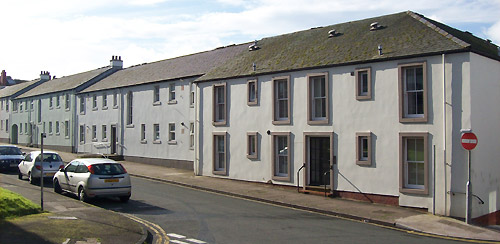
Across the road on the town side we can see a shift in thinking between the 1960's and the late 1970's. By the time these apartments were built, replacing houses that had become too dilapidated to restore, the value of the Georgian heritage had been realised and these were styled to fit in with the houses that remained.
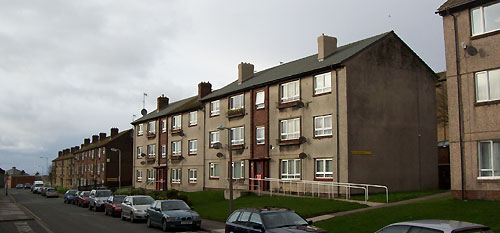
Thus, the two sides of the street appear almost as if they are in different towns with the older flats actually looking more modern, though ironically dated to within a couple of decades, unlike the Georgian style which lasted a century and now has an air of permanence.
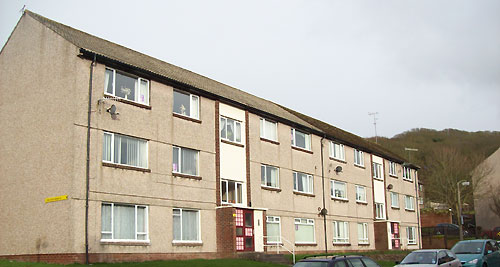
The modern flats go all the way through Scotch Street and on to Michael Street and continue up the hill to Peter Street.
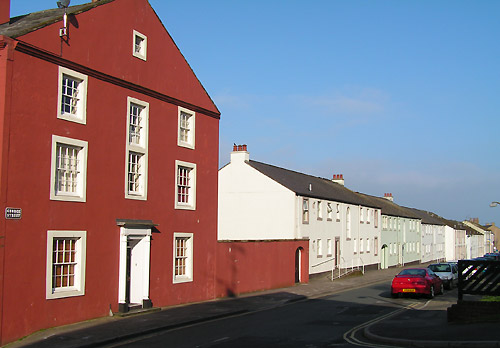
What appears as a large double fronted house is actually only one room deep at the corner as builder decided to squeeze another one cell house on the plot at the Scotch Street side. This produced an unusual layout with a central staircase and door in the gable end.
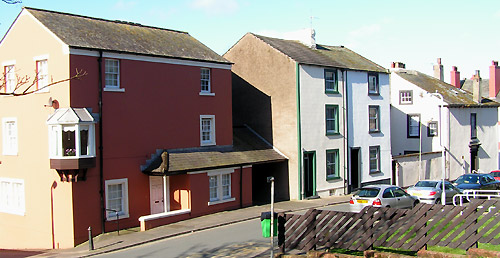
The end house on George Street is actual quite a modern building but has taken the basic Whitehaven Georgian style and has added interest with the beautiful corner oriel window and a quirky porch. It fits in perfectly with the town and the rest of the street. The next two houses are original and so it the house on the corner of Scotch Street.
© WAWL 2010